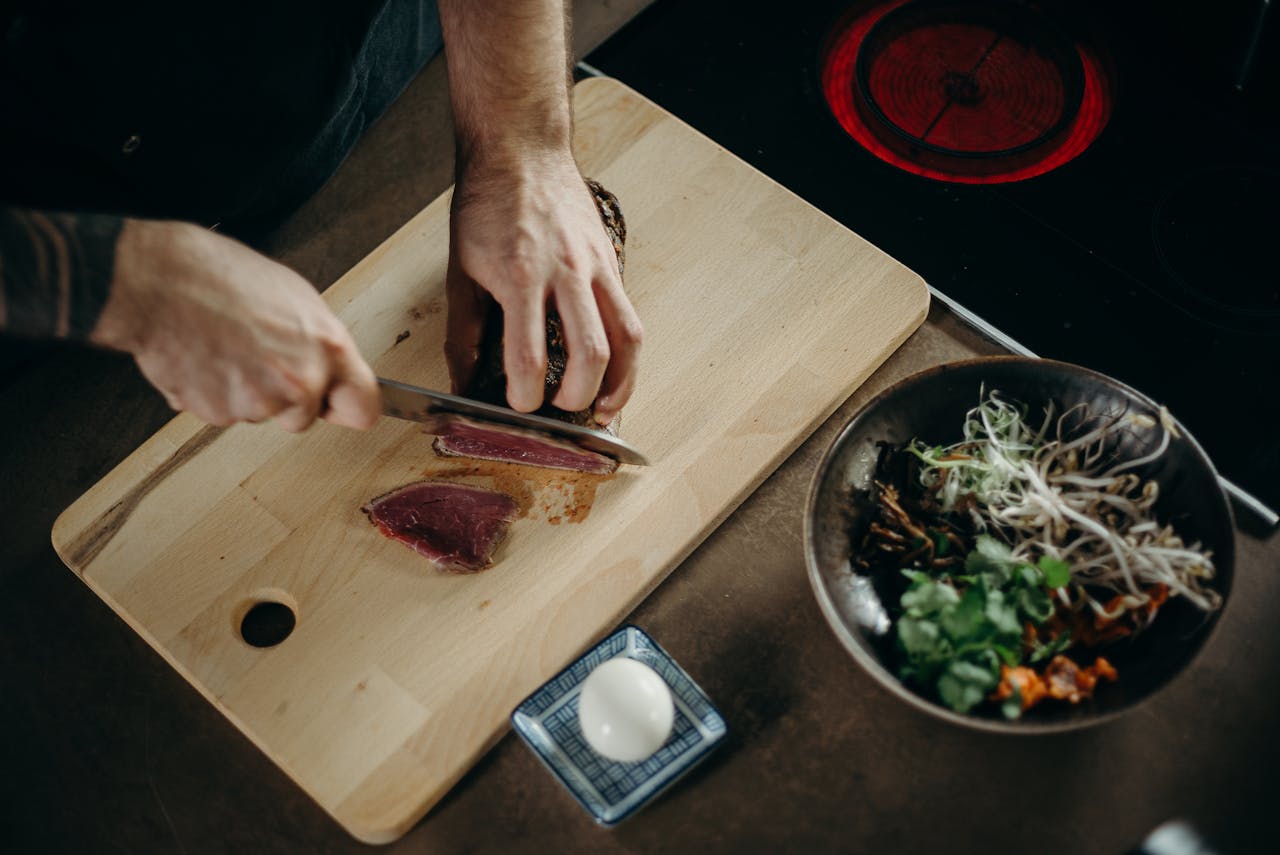Cutting boards are an indispensable tool in every kitchen. They protect your countertops, keep your knives sharp, and most importantly, provide a safe and clean surface for preparing food. But with so many different materials available, such as wood, plastic, and bamboo, choosing the right cutting board can be a daunting task. This article will provide you with a deep dive into the characteristics of different cutting board materials, their pros and cons, and how to care for them, helping you make an informed decision for your kitchen.
The Pros and Cons of Wooden Cutting Boards
Wooden cutting boards are often favored by professional chefs and cooking enthusiasts due to their durability and aesthetic appeal. They come in a variety of wood types, including maple, oak, and walnut, each with a unique color and grain pattern. But are they the best choice for both meat and vegetables?
Also to read : How to choose a durable kitchen table for a busy UK family?
One advantage of wooden boards is their ability to naturally self-heal. This means that the knife cuts close up on their own over time, leaving fewer grooves where bacteria can hide. This makes them an excellent choice for chopping vegetables.
However, wooden boards have some drawbacks. They require regular maintenance, such as oiling to prevent them from drying out and cracking. They’re also not dishwasher-safe, so you need to clean them by hand, which can be a hassle. Additionally, wooden boards are typically more expensive than their plastic counterparts.
Have you seen this : How to choose a durable kitchen table for a busy UK family?
When it comes to cutting meat, it’s important to follow food safety guidelines. Bacteria from raw meat can seep into the grain of the wood, making it harder to fully clean. Thus, it’s recommended to use a separate board for raw meat, preferably one that can be sanitized in the dishwasher.
Understanding Plastic Cutting Boards
Plastic cutting boards are another popular choice in many kitchens. They’re lightweight, durable, and come in a variety of sizes and colors. Plus, unlike wooden boards, they’re dishwasher-safe, making them easier to clean and sanitize.
Plastic boards are a great choice for cutting meat due to their ease of sanitation. You can put them in the dishwasher or clean them with bleach solutions to kill bacteria. This can provide peace of mind when handling raw poultry, beef, or fish.
However, plastic boards aren’t perfect. They can develop knife scars over time, which can trap food and bacteria. Plus, they can dull your knives faster than wooden or bamboo boards. Additionally, while they’re less expensive than wooden boards, they’re not as eco-friendly and need to be replaced more frequently.
The Appeal of Bamboo Cutting Boards
Bamboo cutting boards are a newer entry to the market but have quickly gained popularity due to their sustainability and durability. Bamboo is a fast-growing, renewable resource, making these boards an eco-friendly choice.
Bamboo boards share many of the advantages of wooden boards. They’re hard and durable, yet gentle on knives. They also have a tight grain, which means they’re less likely to scar and trap food particles and bacteria.
In terms of food safety, bamboo boards are similar to wooden boards. They’re not dishwasher-safe and require care to prevent cracking and warping. Therefore, like wooden boards, they’re more suitable for fruits and vegetables than meat.
How to Keep Your Cutting Boards Clean and Safe
Regardless of the type of cutting board you choose, it’s essential to keep it clean and properly maintained. This will not only extend its lifespan but also ensure the safety of your food.
For plastic and bamboo cutting boards, clean them with hot soapy water after each use. If you’ve cut raw meat, sanitize the board in the dishwasher or with a bleach solution.
Wooden boards require a bit more care. Clean them with warm soapy water, but avoid soaking them to prevent warping. To maintain the board’s moisture and prevent cracking, regularly apply a food-grade mineral oil.
Where to Buy the Best Cutting Boards?
When you’re ready to invest in a new cutting board, there are countless options available online and in stores. Amazon is a great place to start your search due to its wide selection and user reviews.
A highly recommended brand to consider is OXO. Their boards are known for their quality, durability, and thoughtful design. Whether you prefer wood, plastic, or bamboo, OXO offers a range of options to suit your needs and preferences.
Remember, there’s no definitive answer to the "best" cutting board material. It largely depends on your personal preferences, cooking habits, and commitment to maintenance. However, having separate boards for meat and vegetables is a smart practice to prevent cross-contamination and ensure food safety. So, equip your kitchen with a variety of cutting boards to accommodate different foods and tasks.
Exploring Other Types of Cutting Boards
Besides the common wood, bamboo, and plastic cutting boards, there are other types of boards available in the market that you may consider. These include glass, marble, and composite boards. Each type offers unique characteristics that may suit your specific needs.
Glass cutting boards are non-porous, which means they do not absorb liquids, odors, or bacteria. They are very easy to clean and dishwasher-safe. However, they are hard and can dull your knives quickly. They can be a good choice for serving cheese or fruits but are not recommended for regular cutting tasks.
Marble cutting boards are similar to glass ones. They are non-porous and easy to clean. Their elegant look makes them fantastic for serving purposes. However, they tend to be heavy and can be hard on the knives.
Composite cutting boards are made from a combination of wood fibers and phenolic resins. They are a good compromise between wood and plastic. Durable and knife-friendly, these boards are also dishwasher safe. They are a great all-rounder but can be quite expensive.
Remember, the best cutting board is not just about the material. It’s also about the size, thickness, and features like juice grooves or handles that can make your food preparation easier and more enjoyable.
Conclusion: Choosing the Best Cutting Board for Your Needs
Choosing the right cutting board for your kitchen is not a decision to be taken lightly. It’s an essential tool that affects your food preparation process, the longevity of your knives, and most importantly, the safety of your food.
Wooden cutting boards, with their self-healing property and gentle effect on knives, are perfect for chopping vegetables and other non-meat food items. However, they require regular maintenance and are not ideal for raw meat due to difficulty in sanitation.
On the other hand, plastic boards are a safe and practical choice for cutting meat. Their dishwasher-safe nature allows for easy sanitization, but they may dull your knives quicker and need to be replaced more often.
Bamboo cutting boards are an eco-friendly alternative, sharing many of the benefits of wooden boards, but they are best suited for fruits and vegetables due to similar limitations in sanitation.
Other cutting board materials like glass, marble, or composite can also be considered based on your specific needs and preferences.
Remember, the safety of your food is paramount. Whichever board you choose, keeping it clean and well-maintained is essential. It’s also a good practice to have separate boards for meat and vegetables to prevent cross-contamination.
Finally, consider investing in a brand known for quality, such as OXO Good Grips. Their cutting boards are available on Amazon and cater to different preferences, whether it’s wood, plastic, bamboo, or other materials.
In conclusion, the best cutting board is one that suits your cooking habits, maintenance commitment, and personal preferences. Happy chopping!






